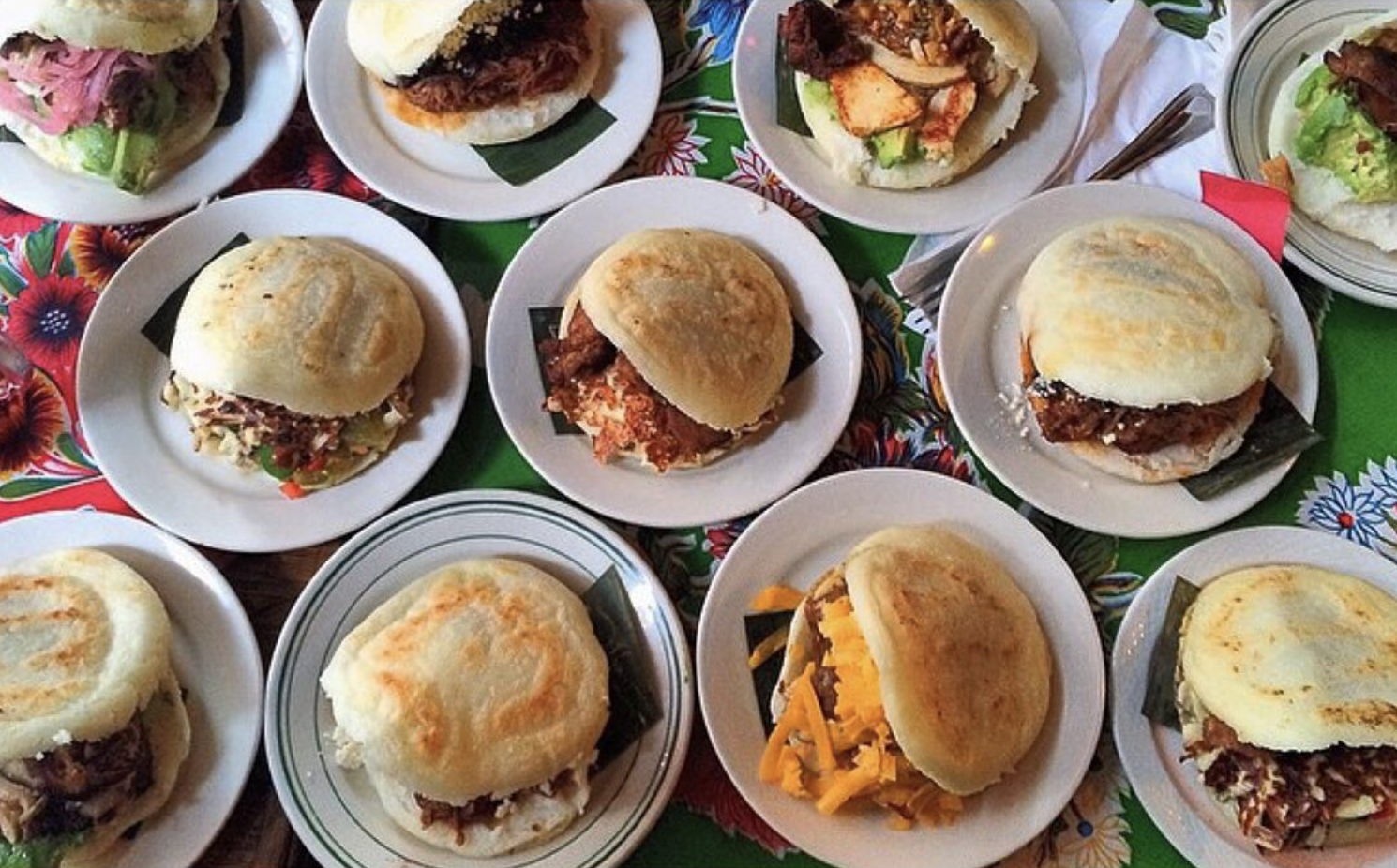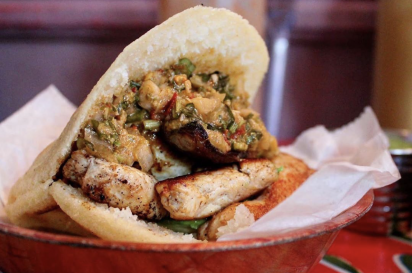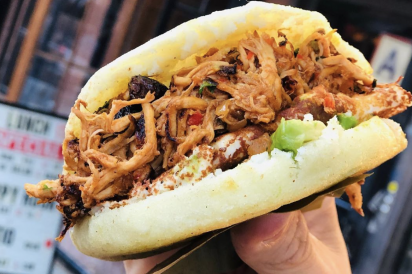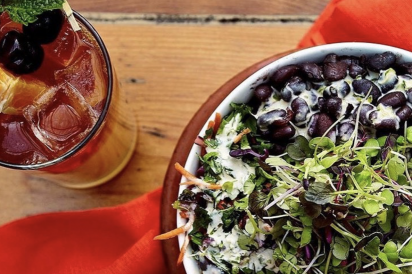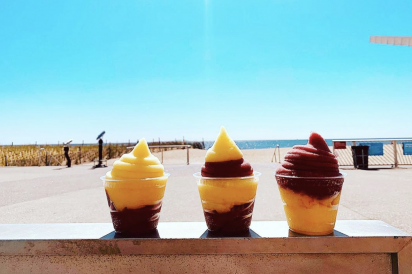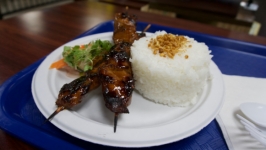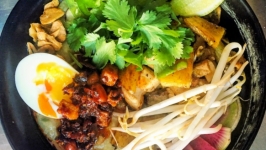Perfect Pockets
Editor's Note: This article was written before the COVID-19 crisis for what would have been our print Women's Issue. Caracas Arepa Bar's Rockaway Beach location is closed indefinitely, but their East Village and Williamsburg locations are open for pickup and delivery. Follow @caracasarepabar for updates and ordering info.
Maribel Araujo serves her arepas hot, fresh and dry. But when she has lines spilling onto the Rockaway Beach boardwalk, with summer demand peaking at 1,000 arepas on weekends and 400 on weekdays, and the construction of each pocket takes 20 minutes (and a two-step cooking process), a logistical equation emerges—one she’s refined since starting Caracas Arepa Bar in 2003.
“We make our arepas to order,” says Araujo inside her colorful Rockaway eatery, the third location following the East Village and Williamsburg. “So that’s a big, big challenge on our operation.”
She co-owns the business with Aristides “Gato” Barrios, her former husband, and is the holder of the secret house sauce recipe. “Someone claimed to crack the code—they didn’t,” she affirms.
Once fired from a Park Avenue bistro for being “too funky” with her lip piercing and blue eyeliner (they’re both gone now), she got a real-life master class in running a restaurant with a surprise 2003 New York Times write-up that put Caracas Arepa Bar on the map and a fire that burned it to the ground in 2016.
These days she’s all about the arepas. “It starts with room-temperature water,” Araujo says as she fills a metal mixing bowl. She adds just enough salt so it tastes “lighter than sea water”; a bit of oil; and very fine pre-cooked corn flour, unlike the coarser variety used for Italian polenta or the lime-treated kind that creates an “elastic feel” in Salvadoran pupusas or Mexican tortillas. Her fingers whisk and squeeze at what starts to resemble white mounds of mashed potato. She rolls a fistful into a ball once the flour “doesn’t stick” to her skin and slaps it flat from one hand to the other.
“It's almost like creating a relationship with the dough—how you’re feeling it in your hands and knowing [if you need] more water or less water.” Because the dough—and her 25-person team makes 300 arepas worth of dough at a time—reacts to the changing climate. It evaporates faster on drier days as it waits to be hauled from kitchen to griddle.
There, a cook scoops and arranges a phalanx of 30 white patties, grilling each side for a few minutes to cook just halfway. “It’s like an omelet,” says Araujo. You have to form “the crust that’s actually going to allow you to flip it perfectly.” Once the second side achieves the satisfying crispy browned exterior, the arepas are moved into a plastic container and stacked five high until an order comes in. The arepa then moves into the induction oven “so that it cooks a little bit inside, too.”
“In Venezuela, you’re born [into] the recipe,” says Araujo. “My nana, dad, mom, sister—we would all be making it in our kitchen every single day. It’s our bread, you know.”
After three minutes in the oven, Araujo pulls each arepa out by hand (finger pads of steel) and takes them to the “arepero” station where they’re sliced and stuffed. The Rockaway location serves the chain’s bestsellers. There’s the classic arepa pabellón—“it’s the Venezuelan national dish”—with black beans, shredded beef, fried sweet plantains, white salty cheese; the reina pepiada with chicken salad, avocado, peppers, onions and herbs; and the arepa “Gato” with the eponymous co-owner’s favorite fillings: Guayanés cheese, avocado and sweet plantain.
For a saucy kick, Araujo offers their famous house sauce and two traditional guasacacas: a green, garlicky, herbal sour-ish one and a chunky guacamole. With a nod to the Mexican staff that helps run the American restaurant industry, including hers, she and her cooks make “la chingona,” a spicy Mexican take on the milk-based Venezuelan ajicero sauce.
“I opened Caracas Arepa Bar to promote our culture through our food, but obviously adapting to where we are,” she says. “Kids come here with a $5 bill and I can barely see them over the counter and they go, ‘Can I have French fries?’” So she included this golden-fried staple of American beach food on her menu. As well as a jackfruit meat substitute.
Rockaway locals had to be introduced to arepas. So did the summer crowds who started coming in throngs with the Rockaway revitalization project. “We have to compare them with pita pockets or bao buns or burgers.” But the residents now “know exactly what they want, they pronounce our food in Spanish, and they feel comfortable.”
This common food vernacular is what Araujo is aiming for. “Our mission is to find a place for arepas in the New York City menu in the same way that you say ‘I’m going for sushi’ or ‘I’m going for tacos.’”
Just one thing: When you go for one of Araujo’s arepas, make sure you eat it immediately. “That way, you have the dryness of the arepa, hot out of the oven, the crunchiness of one thing that’s meant to be crunchy and not soggy.”


